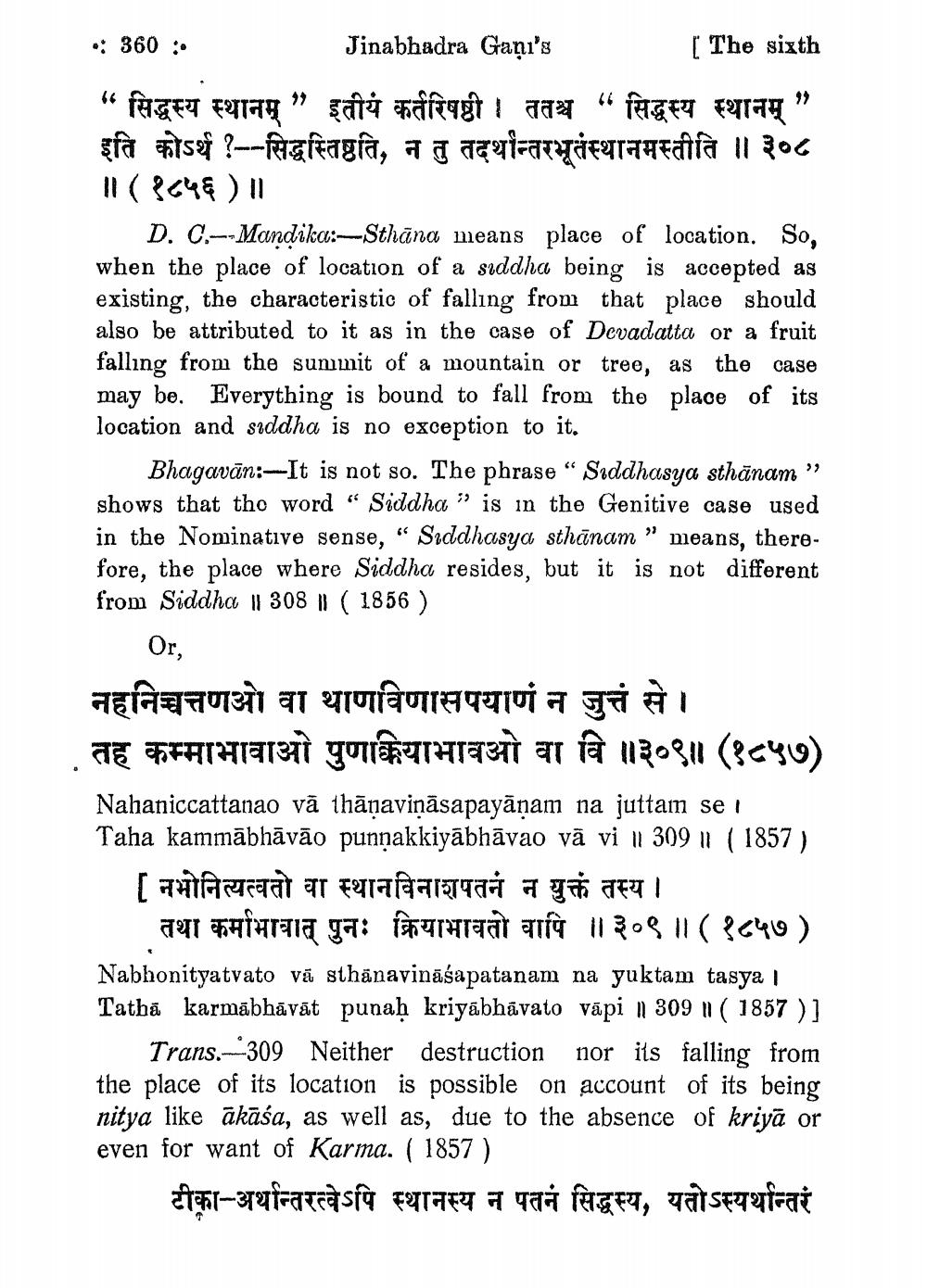________________
•: 360
Jinabhadra Gani's [ The sixth " सिद्धस्य स्थानम् " इतीयं कर्तरिषष्ठी। ततश्च " सिद्धस्य स्थानम् " इति कोऽर्थ ?--सिद्धस्तिष्ठति, न तु तदर्थान्तरभूतंस्थानमस्तीति ॥ ३०८ ॥ (१८५६)॥
D. C.--Mandika:--Sthāna means place of location. So, when the place of location of a suddha being is accepted as existing, the characteristic of falling from that place should also be attributed to it as in the case of Devadatta or a fruit falling from the summit of a mountain or tree, as the case may be. Everything is bound to fall from the place of its location and siddha is no exception to it.
Bhagavān:-It is not so. The phrase " Saddhasya sthānam " shows that the word “ Siddha" is in the Genitive case used in the Nominative sense, “ Siddhasya sthānam " means, therefore, the place where Siddha resides, but it is not different from Siddhaa || 308 ॥ ( 1856 )
Or,
नहनिच्चत्तणओ वा थाणविणासपयाणं न जुत्तं से। तह कम्माभावाओ पुणकियाभावओ वा वि ॥३०९॥ (१८५७) Nahaniccattanao vā thānavināsapayānam na juttam se i Taha kammābhāvāo punnakkiyābhāvao vā vi 11 309 11 ( 1857 ) [ नभोनित्यत्वतो वा स्थानविनाशपतनं न युक्तं तस्य ।
तथा कर्माभावात् पुनः क्रियाभावतो वापि ॥३०९ ॥ ( १८५७) Nabhonityatvato vā sthanavināśapatanam na yuktam tasya | Tathā karmābhāvāt punaḥ kriyabhāvato vāpi || 309 11 ( 1857 ) ]
Trans.--309 Neither destruction nor its falling from the place of its location is possible on account of its being nitya like ākāśa, as well as, due to the absence of krijā or even for want of Karma. ( 1857 )
टीका-अर्थान्तरत्वेऽपि स्थानस्य न पतनं सिद्धस्य, यतोऽस्यर्थान्तरं




